This is Part Two of the Designing a Bird Sanctuary series. Catch Part One here!
This project, dubbed ‘Their Place’ is part of our 2019 Green Jay Landscape Design Design Highlights series (#1!). Check back for a discussion of the rest of our favorite projects of 2019! Read about projects 2, 3, 4 and 5.
The Design Intent
A place for the birds, the caterpillars, the butterflies and the bees – the displaced species of our native habitats – Their Place. This design needed to be an authentic, functional habitat for both native species and migrating birds. It also needed to be a beautiful and inviting space for the client to enjoy in harmony.

We came into the project with a fairly blank slate, with the exception of the dual-waterfall stream, which culminated in a pond-less gravel area with a firepit. We used these well-constructed bones as the foundation of the design. The first step was to map out circulation paths and viewing areas, and to use our site analysis to determine the existing planting microclimates.
We identified five distinct planting microclimates and garden types: full sun perennials, sun/shade perennials, sun/shade rain gardens, sun/shade woodland slope, and a shaded woodland.

Above: AutCAD drawing of Their Place design. This design presentation was a huge collaborative effort for our entire design team.
Layout
Circulation guided this design, in a series of sweeping paths that guide you through the different garden zones, to various viewing platforms, and to the central area of activity.
On a grand flagstone path, you enter the sanctuary with an option to travel left, towards a viewing platform, or right to meander through the rain garden. The left path also diverges off through a Bird & Butterfly garden and toward the central entertaining area: the streamside firepit, which we stylized by adding a flagstone surround to anchor the pit in the otherwise gravel patio.
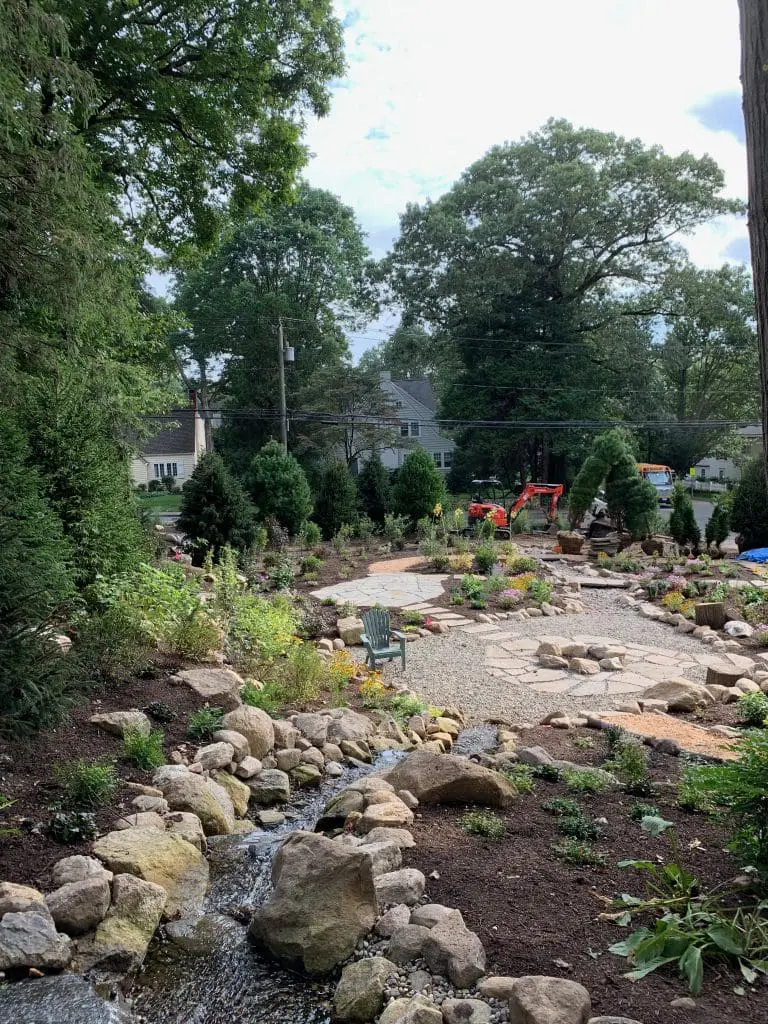
From this central patio, you can enjoy the waterfall, the firepit, and the range of microclimates and designed habitats around you. Two flagstone viewing platforms were installed northeast and southwest of the property, offering different viewpoints and intimate seating areas.
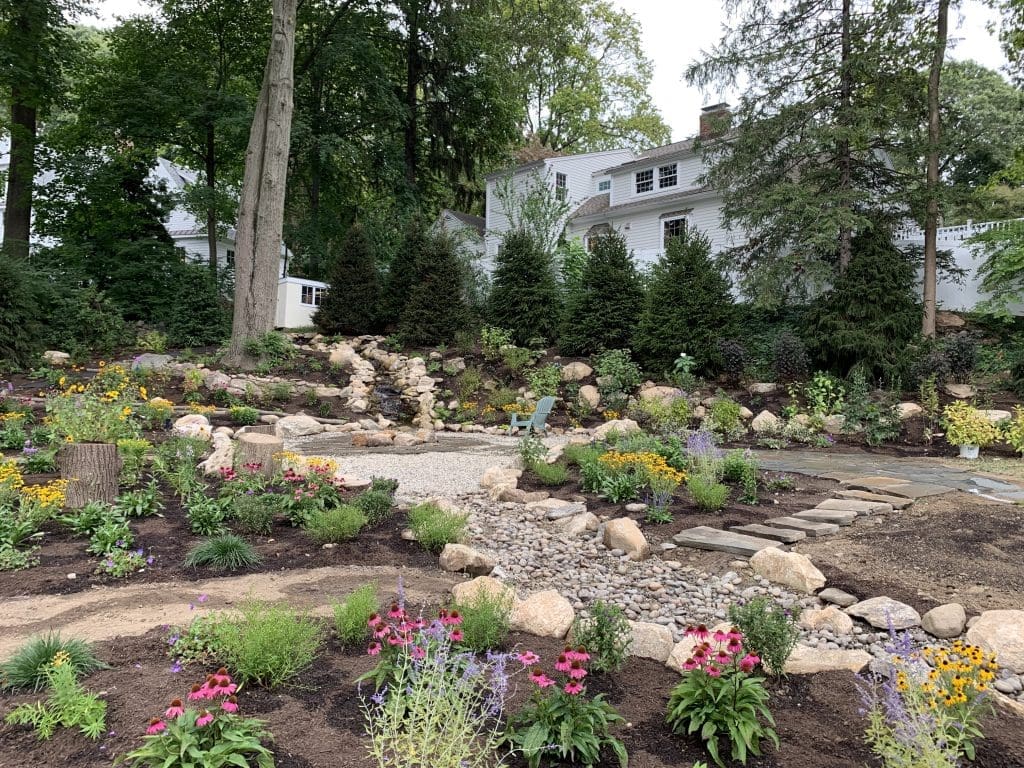
This design is a model of natural stonework. We always prefer to use natural, locally sourced materials in our projects over synthetic ones. These patios and walkways are made of local flagstone on a soft, stone-dust base, which allows water to percolate through the joints. Hard bases – cement – do not allow for storm water infiltration. What’s more cement production is responsible for a startling 8% of global carbon dioxide emissions! Synthetic hardscape materials, like concrete pavers (cement is a main ingredient of concrete), usually cannot be recycled or repurposed, and end up in a landfill.
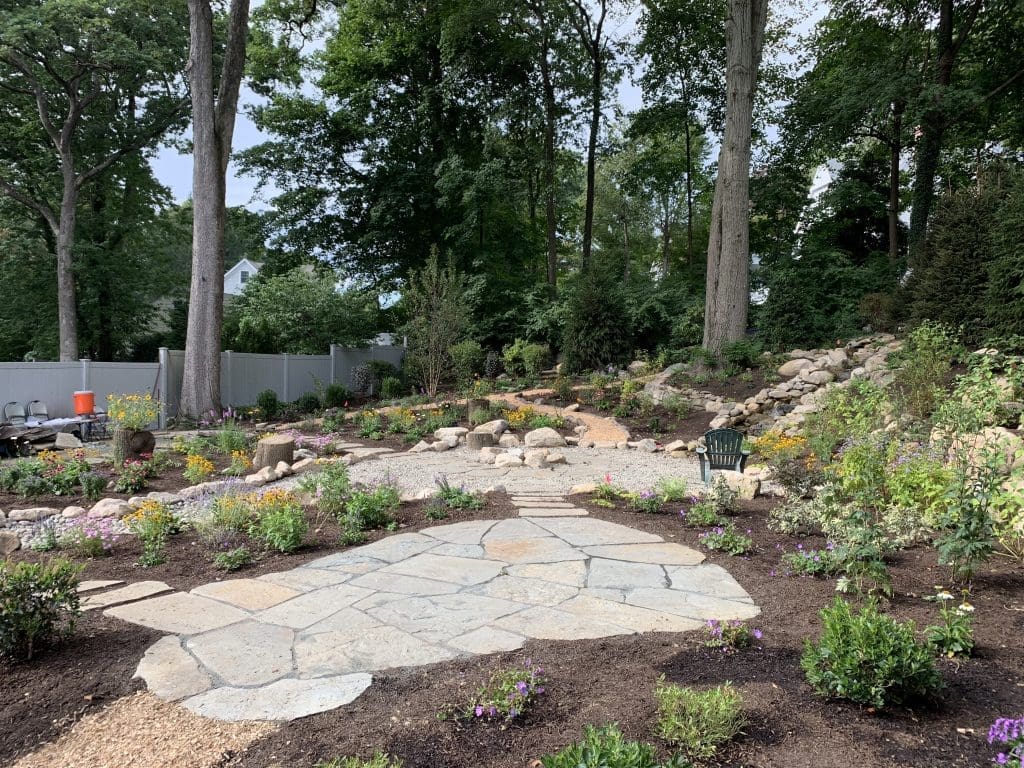
Secondary paths were constructed of woodchips and lined with fallen logs. Woodchips are a great path material because they allow for infiltration and are relatively inexpensive and easy to maintain.

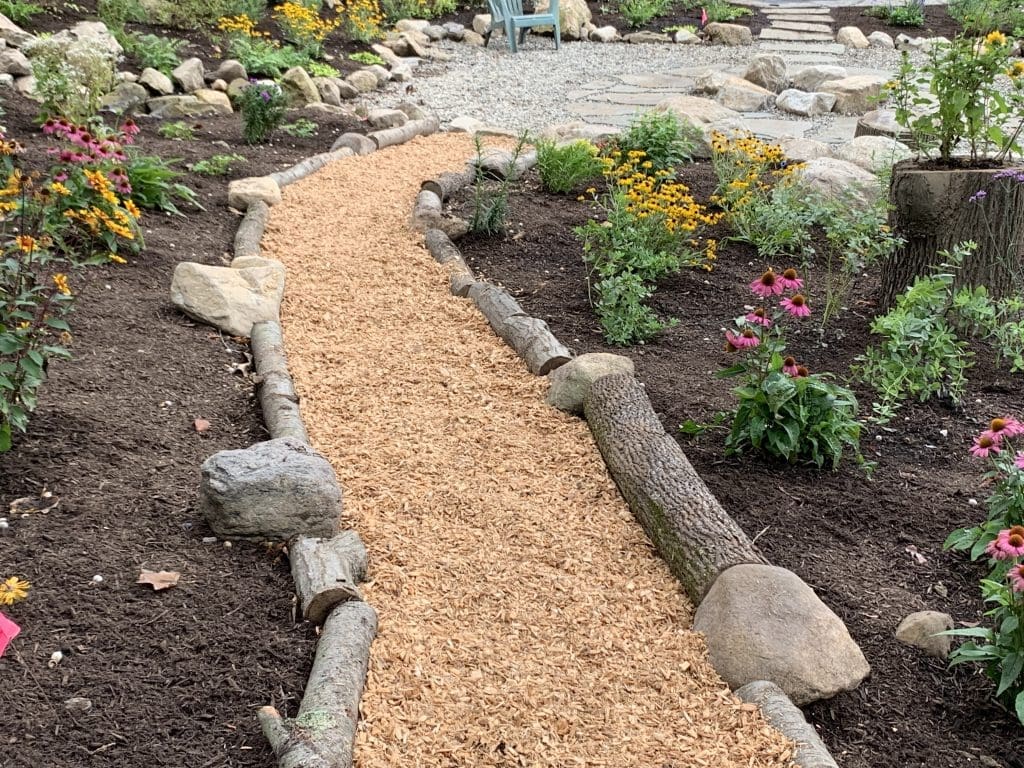
Picking Plants
GJL chose the plant pallet specifically for the beneficial insects each species would attract – beneficial for both their plant pollination capacity and as a food source for local birds. Iconic entomologist Doug Tallamy estimates that one clutch of chickadees requires 6,000 – 9,000 caterpillars to raise to maturity! The first step in recovering our bird populations is to boost insect populations. And if you don’t think bird populations are something to worry about, think again. The Audubon society estimates that North America has lost 3 billion birds since the 1970s – more than one in four birds.
Another important consideration in plant selection is the sequence of blooms, seeds and berries. Not only is it aesthetically interesting to have something occurring throughout the year, not just during peak growth in spring / early summer, but it is essential in creating a functional habitat! Two weeks of pollen does not a habitat make! What’s more, berry-producing shrubs and the seeds of some native perennials provide essential food sources in fall and winter.

We also incorporated a number of native and non-native shrubs to develop a woodland scrub-shrub habitat, an area with enough coverage and woody material to make a suitable shelter for many bird species. Behind the scrub shrub garden is a serpentine planting of large evergreens, creating both privacy screening and nesting habitat.
Selections from our Plant List
Scrub-Shrub
Blueberry (Vaccinium)
Summersweet (Clethra)
Chokeberry (Aronia)
Bird & Butterfly
False Sunflower (Heleopsis)
Aster
Bee Balm (Monarda)
Lupine
Woodland
Ninebark (Physocarpus)
Shrub Honeysuckle (Lonicera tatarica)
Ivory Halo Dogwood (Cornus alba)
Red & Yellow Twig Dogwood (Cornus)
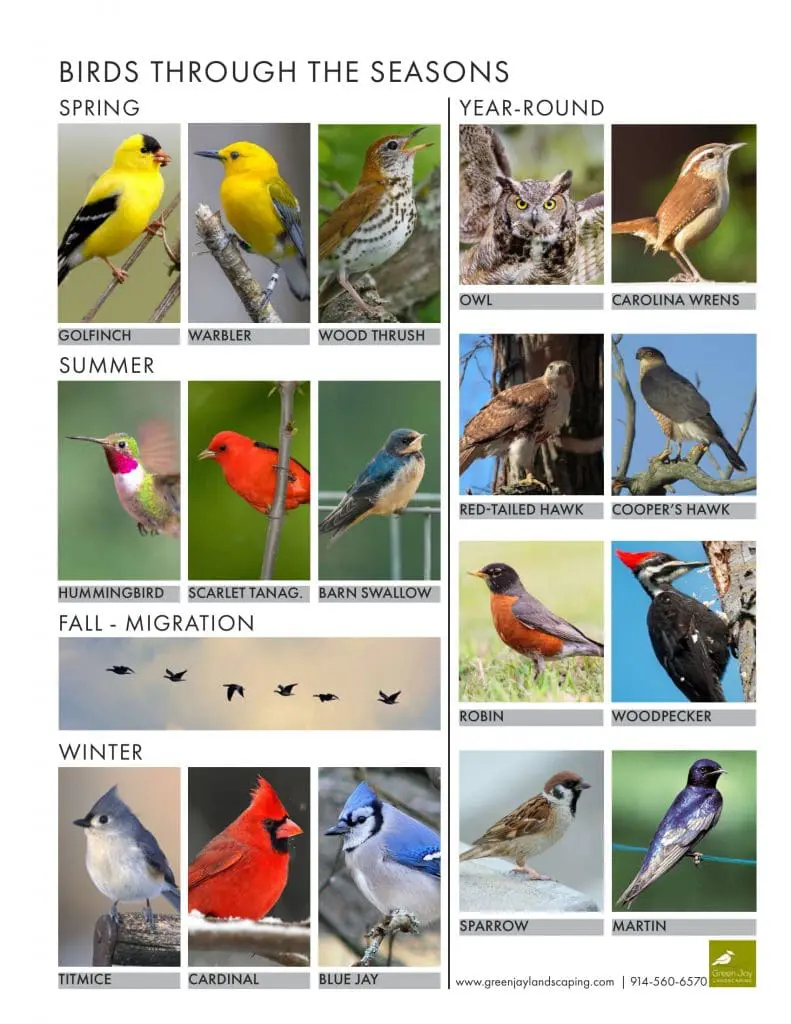
Above: We created this visual guide of what birds Their Place will provide habitat for, based on our plant selections.
Shelter, combined with a water source for bathing, as provided by the existing constructed stream, together fulfill two of the five categories of the National Wildlife Federations Certified Wildlife Habitat program. The full five include:
- food sources
- water sources
- cover / shelter
- places to raise young
- sustainable practices (soil/water conservation, invasive species control and organic maintenance).
With diverse and successional plant selection for pollen, nectar and berries, coupled with the structural habitat elements, this property no doubt qualifies as a Certified Wildlife Habitat.
In terms of sustainable practices, we will be maintaining this property under our Organic Property Management Program. Since there is no lawn whatsoever, we will design a custom maintenance program for the property. This fall–a mast year for acorns—we created an acorn storage area out of repurposed wood and stone. The acorns needed to be collected to avoid sapling germination in the spring, and storing them for squirrels, chipmunks, and birds such as jays, pigeons, crows, ducks, mallards turkeys and bobwhite quail is an added habitat service.
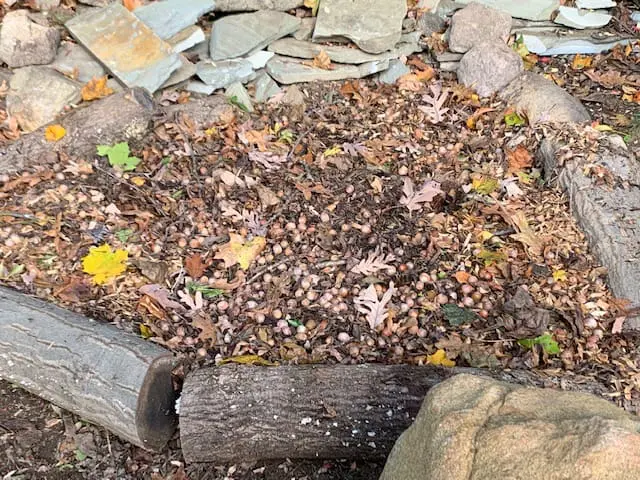
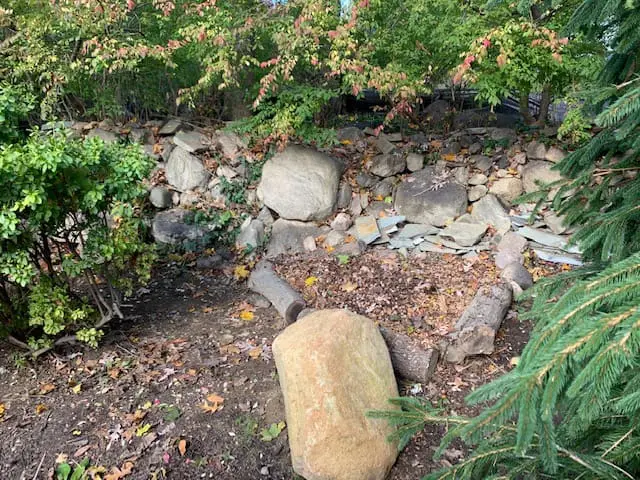
GJL also implemented numerous stormwater management solutions (read about the structural storm water management elements in Part One of our blog). Two rain garden areas were designed with native shrubs and perennials with facultative wetland status, meaning they can withstand both flooding and drought, and successfully absorb excess storm water in storm events.
Rain Garden Plant Selections:
Serviceberry (Amelanchier)
Spicebush (Lindera)
Cardinal Flower (Lobelia)
Cinnamon Fern (Osmundastrum)
Even before the design installation was complete, we received fabulous feedback from the client. Below, an email from the client delighting in how many birds were already on the property!
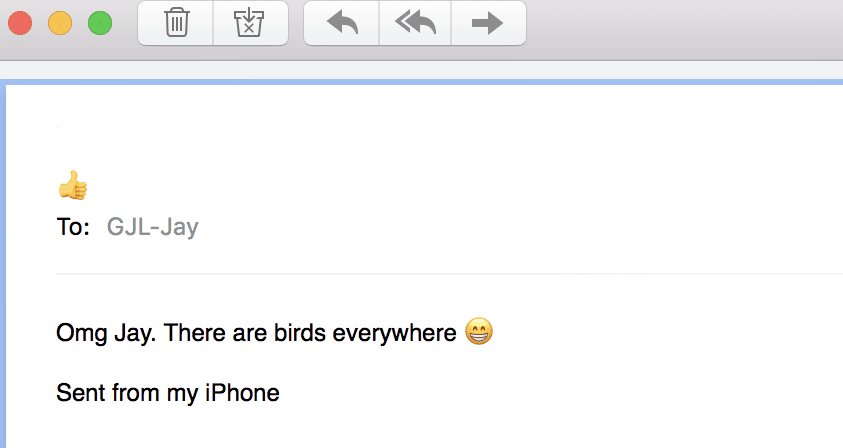
We can’t wait to see this design grow, evolve and flourish. It is a true example of designed habitat, ecological landscaping, and certainly qualifies as Pollinator Pathway of Darien. Follow us on social media for more photos as this garden grows! @greenjaylandsaping.
—
Green Jay Landscape Design
914-560-6570